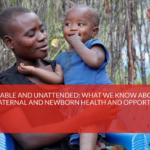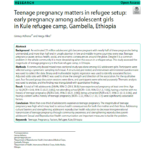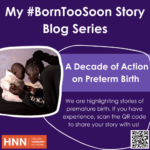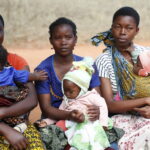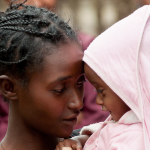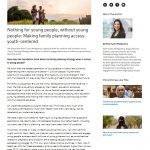The transition to becoming a parent for the first time is a time of rapid changes (sexual debut, first pregnancy, marriage, first birth, learning to care for a newborn), often within the space of a year. Globally, about 12 million adolescent girls (ages 15-19) and many more young women (ages 20-24) become parents every year. Data on childbirths to very young adolescent (ages 10-14) is becoming more available, with a global rate of 1.5 per 1,000 women in 2022.
These first-time parents (FTPs), girls and women between the ages of 15 and 24 who have one child and/or who are pregnant, and their male partners–often navigate these life milestones with varied support from their family, community, and the health system, with adverse health outcomes.
42.5
births per 1,000 adolescent girls age 15-19 (2016-2021)
34
percent higher risk of death in the neonatal period among babies born to adolescent mothers
All data on this page represents the most recent data available, unless otherwise noted. Please visit our Newborn Numbers page and download the Excel spreadsheet to explore the data further.
What can be done?
Due to social and biological vulnerabilities, pregnancy in adolescence is associated with poor health outcomes for mothers and newborns. First-time parents use of health services during and following pregnancy is often low, due to limited decision-making power, stigma, lack of resources, and judgmental attitudes from health workers. Rapid repeat pregnancies, defined as less than 24 months after the previous birth, increase risk of preterm birth, low birthweight, small size for gestational age, and infant and early childhood mortality—and, in many contexts, are more common among adolescent mothers.
Early pregnancy is also associated with adverse education and economic outcomes for mothers. A focus on increasing FTPs’ timely and continued use of health services across the continuum of care—antenatal care, maternity, postnatal, newborn, and postpartum family planning—is essential to improving health and other outcomes for mothers and babies.
Comprehensive approaches targeting FTPs have yielded promising results, increasing use of family planning and other health services, improving social support for FTPs, and encouraging more gender-equitable household practices. Projects and research with FTPs have shown several common essential elements.
Reflecting the diverse needs and varied influences of FTPs, activities at the individual, couple, household, community, and health system levels are needed. Engagement of household influencers and key decision-makers, especially mothers-in-law, is critical, as is addressing social norms that encourage early and closely-spaced pregnancy and limit girls’ decision-making power. Efforts to strengthen service quality and the health system’s responsiveness to the needs of FTPs are key.
Useful resources
Increasingly, evidence highlights the importance of framing efforts around FTPs’ aspirations for their and their child’s future–as well as addressing the needs and aspirations of their male partners. Last, research and program learning highlights that approaches must be tailored to the needs of diverse FTPs, particularly the distinction between those who are married versus parenting alone. Applying these key elements to approaches that reach FTPs at scale is an area for future learning.
Here are some resources:

